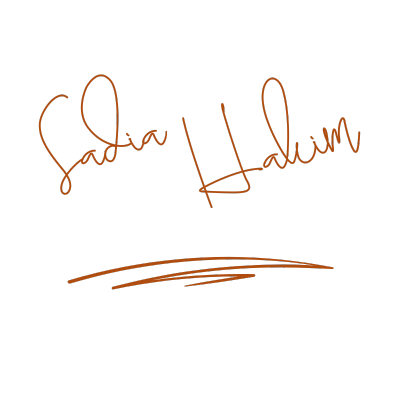They cannot hunt what they cannot see — that’s the sacredness of going unnoticed.
There is a violence in being seen — not always with fists, but with eyes that demand, with hands that take, with mouths that dissect you like you’re prey. The world does not witness, it consumes. It feeds on softness, chews through vulnerability like it’s owed.
I’ve stood in that fire, watched them strip names into labels, souls into performances. And I’ve learned — survival is not about being louder. It’s about knowing when to vanish. When to pull your soul back into your ribcage and lock the door.
Being unseen is not erasure. It is warfare. It is the refusal to let this world drag your bones into the light for judgment. It is a fist wrapped in silence. It is rage dressed in stillness. It’s saying — you will not touch me, you will not know me, you will not break me.
There is something sacred in that — the art of becoming untraceable. A shadow with teeth. A presence so self-contained it burns without flame. I am not here for their gaze. I am not their spectacle. I do not exist for their comfort, their curiosity, their need to devour everything real.
The most sacred parts of me are off-limits — guarded, sealed, holy. Let them choke on their need to understand. Let them starve. Because I am not here to bleed for them.
I am not here to be understood. I am here to exist without permission — whole, untamed, unseen.
There is sacredness in being unseen, power in going unnoticed, and freedom in being unreachable.
Do you know there is a bird called ptarmigan? It lives in the mountains and cold northern places, surviving in harsh lands where not much else dares to stay. In summer, its feathers turn brown and grey, blending with rocks and earth. In winter, it becomes white like snow, almost invisible.
It doesn’t dazzle, doesn’t demand the sky’s attention—it’s a quiet fragment of the earth, small and unassuming, surviving in the wild. It blends so well into the mountain silence that you’d miss it if you weren’t looking close. But when winter descends and the world turns pale and merciless, the ptarmigan changes.
Slowly, quietly, it sheds the mountain and becomes the snow. White, almost ghost-like, it vanishes into the cold—not by running away, not by trying to change its habitat, but by becoming what cannot be hunted. It doesn’t do this for beauty or glory. It does this because in that stillness, being seen means being devoured.
And the Arctic fox—it knows this too. Small, sharp, moving with purpose. In summer, its coat matches the rough ground, the stones and soil it prowls. But as snow buries the world, it cloaks itself in white. Disappearing into the frost, it becomes part of the silence. Not to be admired. But to survive. To breathe without being noticed. To live without drawing the gaze of death.
Many creatures on this planet do this to survive.
I think about this often—how they don’t run, don’t fight to be seen. They shift, they adapt. They blend. And I wonder if we are not meant to do the same sometimes. If there are moments in life where becoming invisible is the only way to stay whole.
When the world around you sharpens its teeth—not always with violence, but with eyes that strip you, words that pierce, hands that take. So we learn the art of camouflage—not out of fear, but from knowing. Knowing that in this society, to be fully seen is to be a target.
And it’s not just about our bodies or presence—it’s about hiding what’s most tender: the soul, the heart, the raw, unarmored parts of us that not everyone deserves to touch. So we retreat, not into weakness, but into quiet power. We become the snow, the shadow, the breath that moves through the storm untouched. Not because we’re afraid—but because survival, at times, is quieter than war. And blending in is sometimes the fiercest form of resistance.
You might ask—how is blending a form of resistance? Doesn’t it mean giving in? Letting them win? Doesn’t disappearing mean we’ve surrendered?
No. Blending isn’t surrender—it’s strategy. It’s not about becoming them or agreeing with what they do. It’s about choosing not to bleed on their stage. It’s knowing when to be loud, when to be still, and when to be unreachable.
To blend is not to bow down—it’s to move in ways they can’t trace, can’t hunt, can’t break. It’s the art of protecting your energy, your truth, in a world that wants to consume it. You’re not surrendering—you’re refusing to give them what they want. Refusing to let them know your next move. That’s resistance.
Because they expect you to react, to fight, to expose yourself. Blending denies them that satisfaction. You vanish into the silence—not out of fear, but because some battles aren’t worth being seen. And sometimes, the most rebellious thing you can do is to exist beyond their reach. Intact. Whole. Unseen.
It’s the thought of existing quietly. Without being noticed. Not because you are small, or afraid, or incapable—but because you choose it. Because there is power in silence, in not offering yourself up for display. Sometimes the most sacred thing you can do is to keep your existence soft and unseen. To let your soul breathe in places no eyes can reach.
It’s not erasure—it’s preservation. Not hiding—but holding. Holding yourself back from the noise, the hunger of this world that feeds on exposure. Existing quietly is not absence—it’s presence without permission.
The sacredness of being unseen lies in denying the world its appetite for your body and soul.
— Sadia Hakim // Sciopoetica
Write your favorite line from this piece below.

